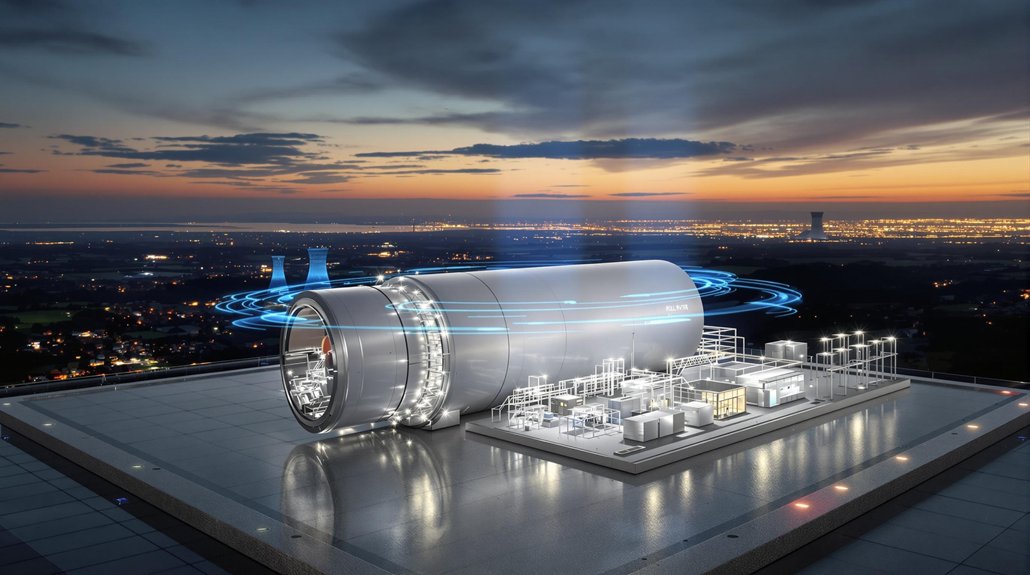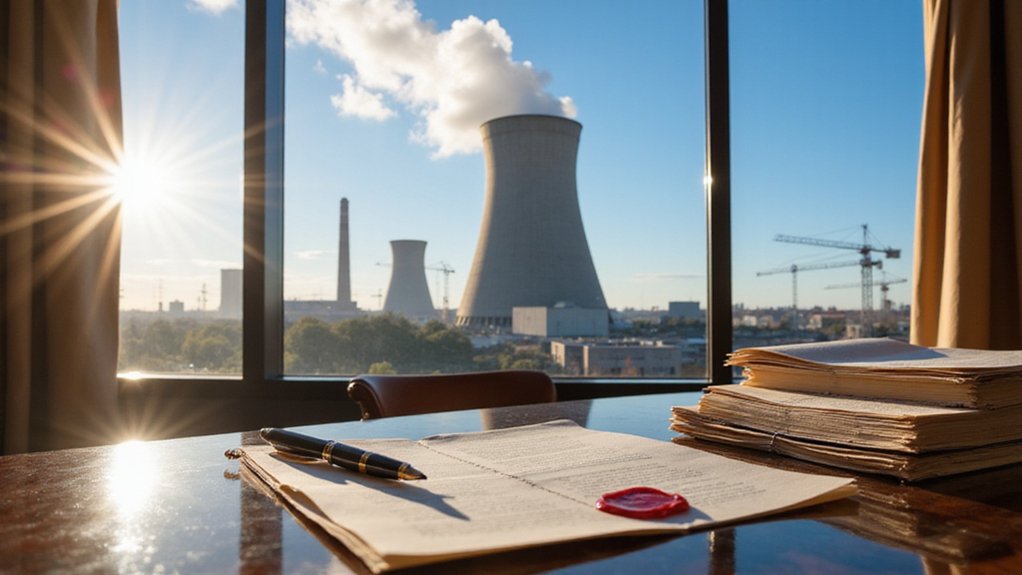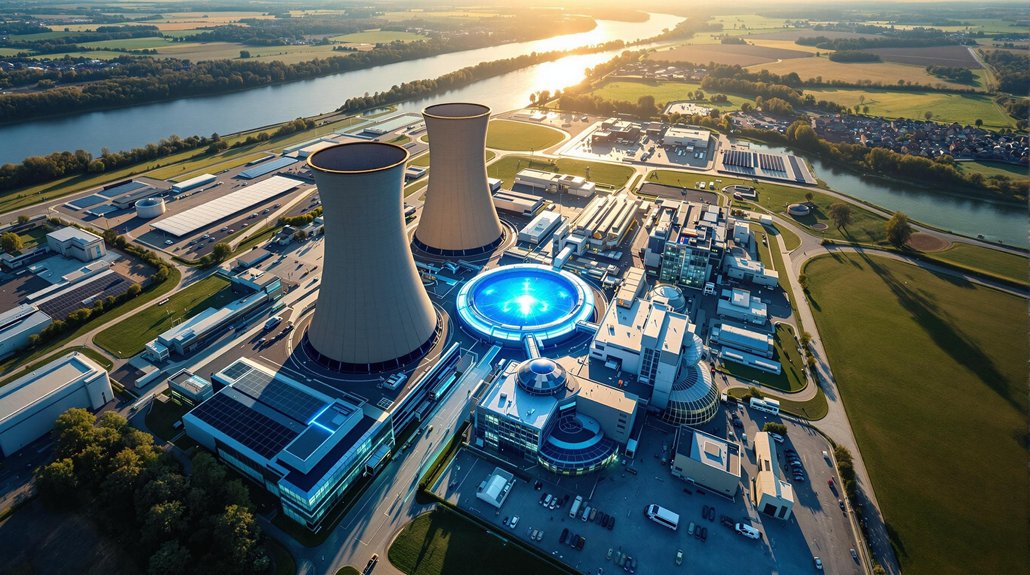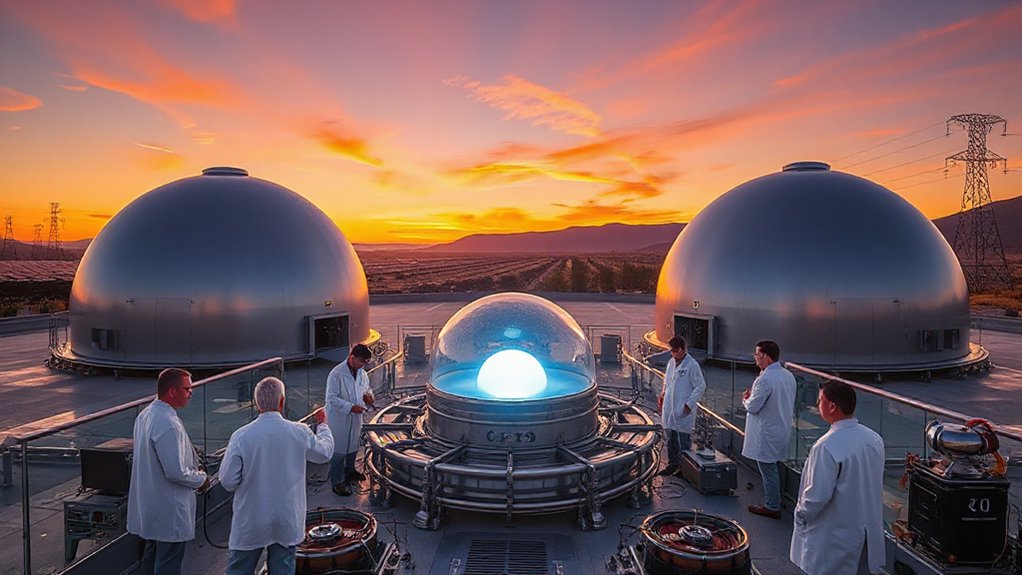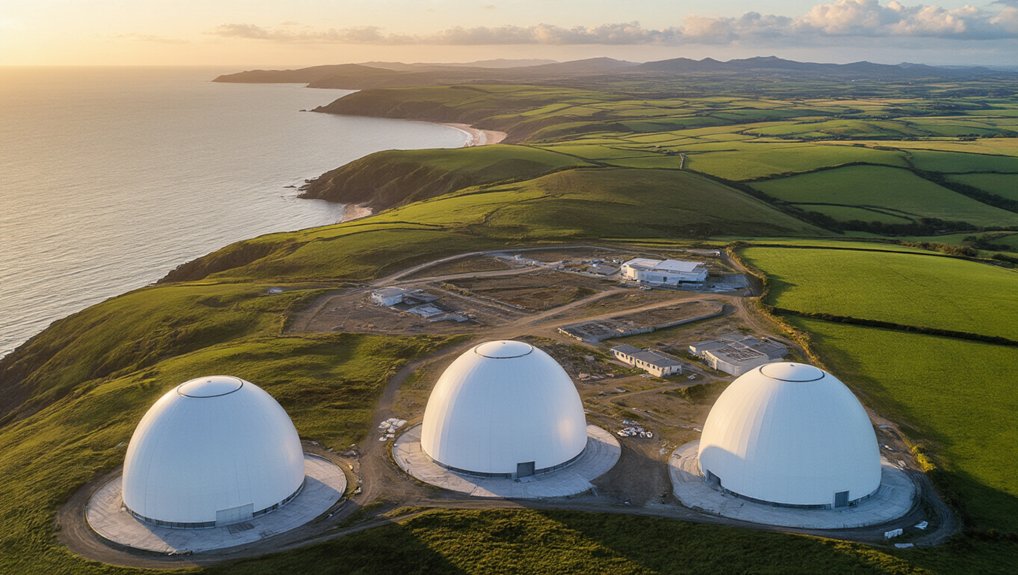Britain is betting big on tiny nuclear reactors. After a grueling two-year competition, Rolls-Royce SMR emerged as the government’s golden child for the UK’s first small modular reactor sites. Not exactly a quick decision, but hey, it’s nuclear power – probably not something you want to rush.
These aren’t your grandfather’s nuclear plants. Each Rolls-Royce SMR packs 470 megawatts of electricity – enough juice to power a million homes from something roughly the size of a basketball court. Three of these babies could light up 3 million homes. That’s the clean energy equivalent of more than 450 wind turbines, without the inconvenience of needing actual wind.
Compact power giants: 470MW in a basketball court footprint, no wind required.
The government’s thrown £2.5 billion at the program already. Money well spent? We’ll see when the first reactors connect to the grid sometime in the mid-2030s. Yes, that’s right – more than a decade away. Nuclear power: the ultimate exercise in delayed gratification.
What makes these reactors special is their 90% modular construction. Most bits get built in factories, not on-site. Fewer muddy boots, fewer problems. At least that’s the theory.
The economic impact sounds impressive. Up to 3,000 new jobs at construction peak. Skilled ones, too – not just handing out leaflets about nuclear safety. The project’s being hailed as a premier UK export technology. Everyone loves British nuclear, apparently. The Czechs have already lined up for potentially 3 gigawatts worth, and Sweden’s giving them the eye too.
Final investment decisions won’t happen until 2029. That’s political-speak for “future governments can still pull the plug.” The reactors will partner with the awkwardly named Great British Energy – Nuclear, because nothing says cutting-edge technology like a company that sounds like a patriotic baking show.
Sixty years of baseload power. No emissions. Energy security. Sounds perfect. Almost too perfect? Maybe. But Britain’s nuclear gamble is rolling the dice anyway. The company has also partnered with Curtiss-Wright to develop safety-critical systems for their SMRs, emphasizing simplicity and robustness in their protection mechanisms. The technology is currently advancing through the final assessment by UK nuclear regulators, putting it ahead of other SMR designs in the regulatory process.
References
- https://www.gov.uk/government/news/rolls-royce-smr-selected-to-build-small-modular-nuclear-reactors
- https://www.world-nuclear-news.org/articles/rolls-royce-smr-agreements-with-skoda-and-curtiss-wright
- https://www.rolls-royce-smr.com/press/rolls-royce-smr-will-build-britains-next-generation-of-nuclear-power-plants
- https://www.rolls-royce-smr.com
- https://en.wikipedia.org/wiki/Rolls-Royce_SMR
